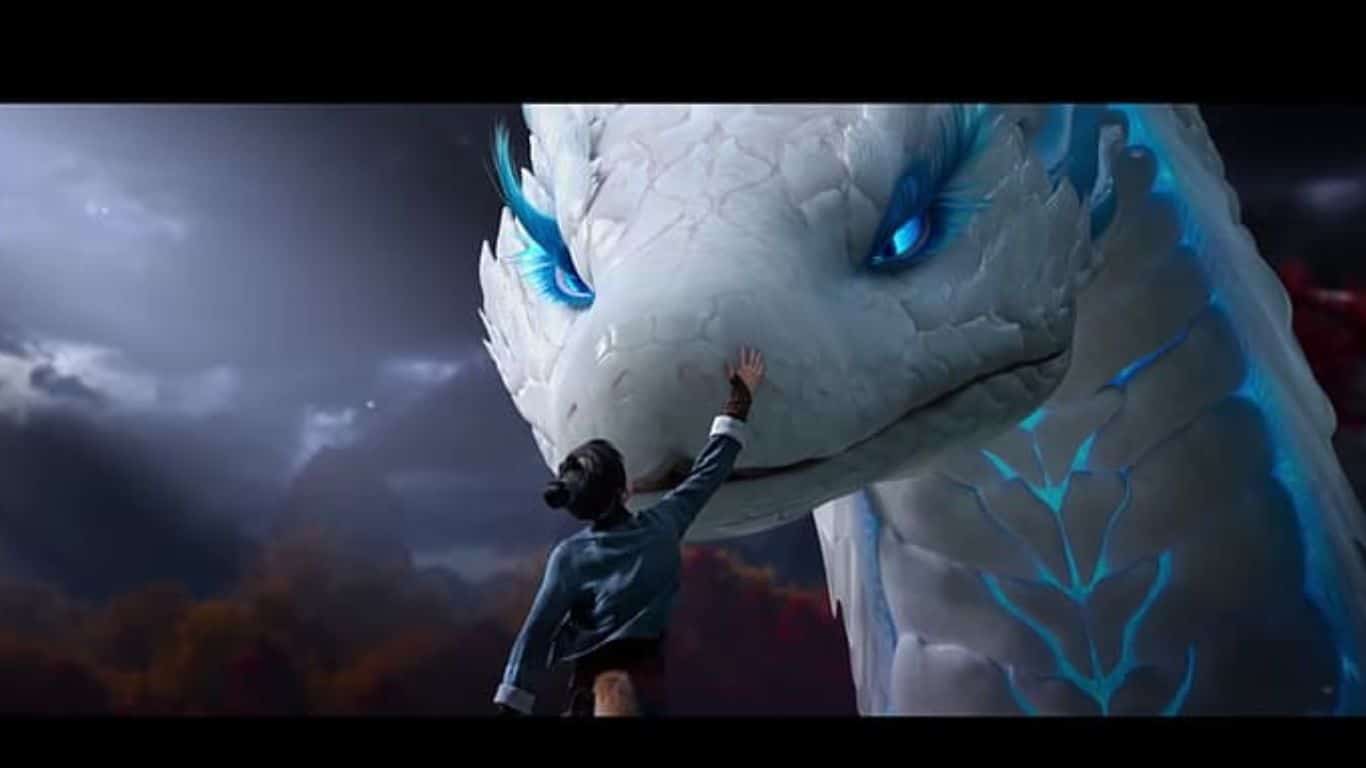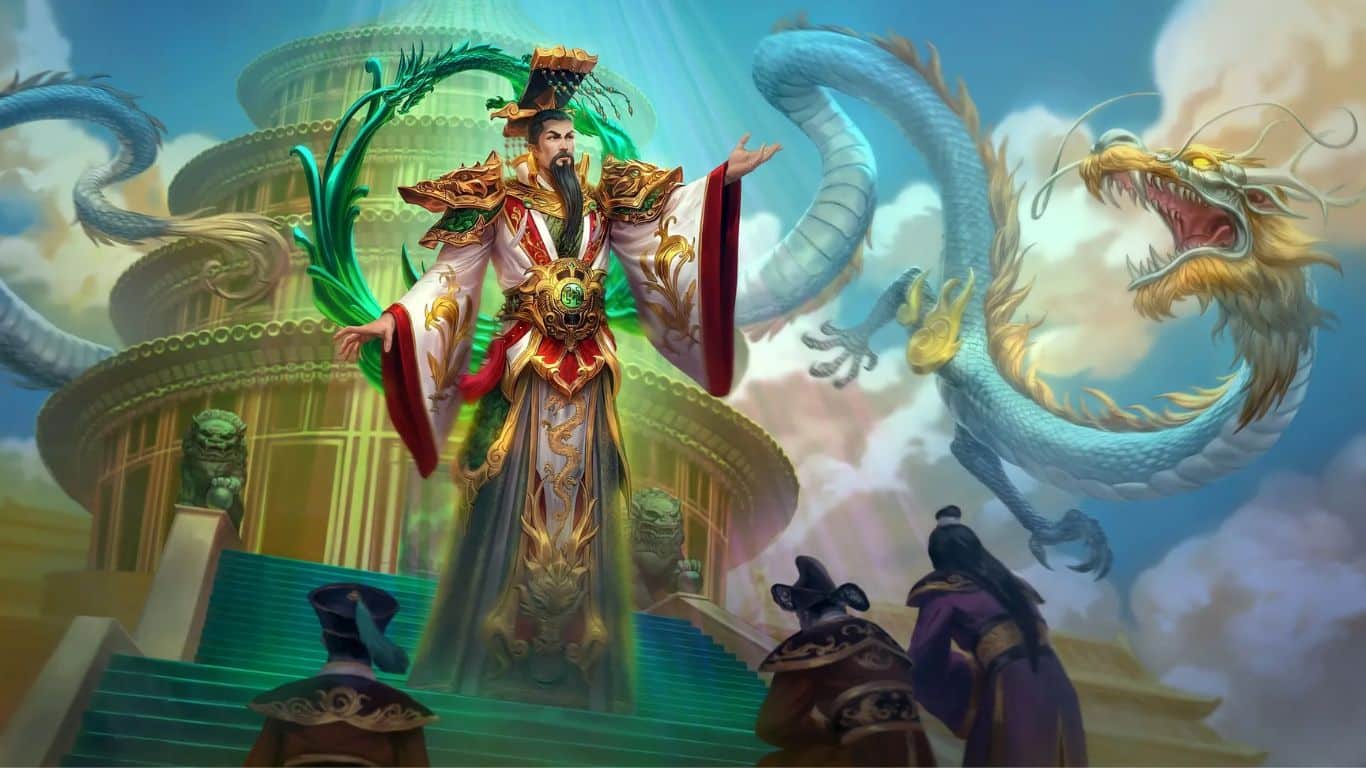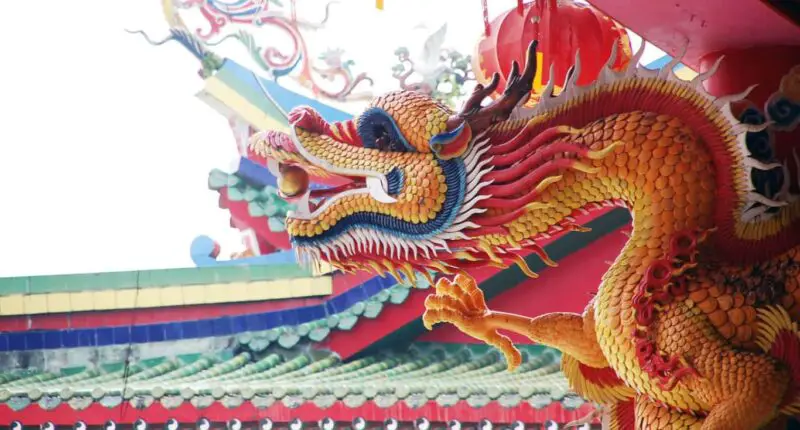Chinese mythology tales are filled with moral lessons, tales of bravery and wisdom, and explain natural phenomena in imaginative and fascinating ways. We’ll explore ten of the most popular the ancient tales of Chinese mythology, each offering a unique perspective into the rich tapestry of Chinese folklore. Whether you’re a history buff, a fan of mythology, or simply looking for a good story, these tales are sure to captivate and inspire. So, sit back and let’s delve into the fascinating world of Chinese mythology.
The Ancient Tales of Chinese Mythology
The Four Dragon Kings

The Four Dragon Kings are powerful deities in Chinese mythology who rule over the four seas and are responsible for the changing of the seasons. Each dragon king is associated with a specific direction and a different season, with their combined powers keeping the natural balance of the world.
The dragon kings are believed to bring rain, control the tides, and create storms. They are revered as symbols of power and are often depicted as fearsome and majestic creatures. In some tales, they are also portrayed as benevolent rulers who use their powers for the benefit of humans.
The four dragon kings are often depicted together in Chinese art, symbolizing their authority over the natural world and their ability to maintain balance and harmony. They remain an important part of Chinese folklore and are widely recognized as powerful symbols of the natural world.
The Eight Immortals

The Eight Immortals are a group of legendary xian (immortal beings) in Chinese mythology. Each immortal has a unique personality, story, and special ability, and they are often depicted together in Chinese art as symbols of wealth, longevity, and good fortune.
The Eight Immortals are:
- He Xiangu
- Lan Caihe
- Zhang Guo Lao
- Liu Haichan
- Han Xiangzi
- Tie Guan Yin
- Li Tieguai
- Cao Guojiu
These immortals are said to have transcended the cycle of life and death and achieved immortality through their virtuous deeds and spiritual enlightenment. They are believed to have the power to bestow blessings, perform miracles, and bring good fortune to those who invoke their names.
The Eight Immortals are popular figures in Chinese folklore and are widely recognized as symbols of longevity, happiness, and good fortune. They continue to be revered in Chinese culture and are often depicted in art, literature, and popular culture.
The Monkey King

Sun Wukong, also known as the Monkey King, is a legendary figure in Chinese mythology and a central character in the classic novel “Journey to the West”. He is a monkey-like creature with supernatural powers, including the ability to change his shape and size, fly, and wield a magical staff.
Sun Wukong is depicted as a mischievous, but ultimately well-intentioned, character who often causes trouble with his antics but also uses his powers to help others. He is revered as a symbol of wit, cunning, and strength, and is often depicted as a hero in Chinese folklore.
The Lady White Snake

The Lady White Snake is a Chinese folktale about a white snake spirit who transforms into a woman and falls in love with a human man. Despite the challenges they face, including opposition from the man’s family and interference from a malicious monk, the couple’s love prevails and they are eventually able to marry.
The story of the Lady White Snake is a classic tale of love and determination, and is widely considered one of the most popular folklore in Chinese history. It has been adapted into numerous forms of media, including opera, film, and television shows.
Nüwa and Fuxi

Nüwa and Fuxi are a brother and sister duo in Chinese mythology who are considered to be the creators of humanity and the founders of Chinese civilization. They are depicted as having divine powers and are revered as symbols of wisdom, creation, and unity.
According to legend, Nüwa was the goddess who mended the broken pillar of heaven and saved the world from chaos. She is also said to have created humans from clay. Fuxi, on the other hand, is credited with teaching humanity the arts of fishing, hunting, and writing.
The Legend of the Yellow Emperor

The Legend of the Yellow Emperor is a central creation myth in Chinese mythology that tells the story of the Yellow Emperor, who is considered to be the ancestor of all Chinese people. According to the legend, the Yellow Emperor emerged as the leader of a tribe of primitive humans and brought them to civilization through his wisdom and military prowess.
The Yellow Emperor is revered as a symbol of Chinese culture and is credited with many important innovations and advancements, including the invention of the calendar, the establishment of the first capital city, and the creation of a system of writing.
The Tale of the Cowherd and the Weaver Girl

The Tale of the Cowherd and the Weaver Girl is a love story about a cowherd and a weaver girl who fall in love but are separated by the Queen Mother of Heaven. Despite the obstacles, they remain devoted to each other and eventually find a way to be reunited.
It is a classic tale of love and determination, and is widely considered one of the most romantic folklore in Chinese history. It has been adapted into numerous forms of media, including opera, film, and television shows.
The Journey to the West

The Journey to the West is a classic Chinese novel that tells the story of a monk named Tang Sanzang who sets out on a journey to India to retrieve Buddhist scriptures. Along the way, he is accompanied by three disciples: the Monkey King, Pigsy, and Sandy, who help him overcome various obstacles and battles with demons.
The Journey to the West is widely considered one of the greatest works of Chinese literature and is noted for its blend of fantasy, humor, and adventure. The novel is also renowned for its portrayal of the Monkey King, who has become one of the most recognizable characters in Chinese folklore and is often depicted as a cunning and mischievous figure.
The Battle of the Gods and Demons

The story is set in a time when the world was in chaos, with the demons terrorizing the people and causing destruction wherever they went. The gods, seeking to restore order, declared war on the demons, leading to a great battle between the two sides.
In the battle, the gods were victorious, and peace was restored to the world. The story is often seen as a celebration of the triumph of good over evil, and the gods are revered as symbols of justice and protection.
The Legend of the Jade Emperor

According to the legend, the Jade Emperor was once a mortal man who, through his good deeds and pure heart, was elevated to the highest position in the heavenly realm.
As the ruler of heaven, the Jade Emperor is responsible for maintaining order and balance in the universe. He is revered as a symbol of justice and compassion and is often depicted as a wise and benevolent ruler.
Also Read: Role of Dragons in Chinese Mythology



